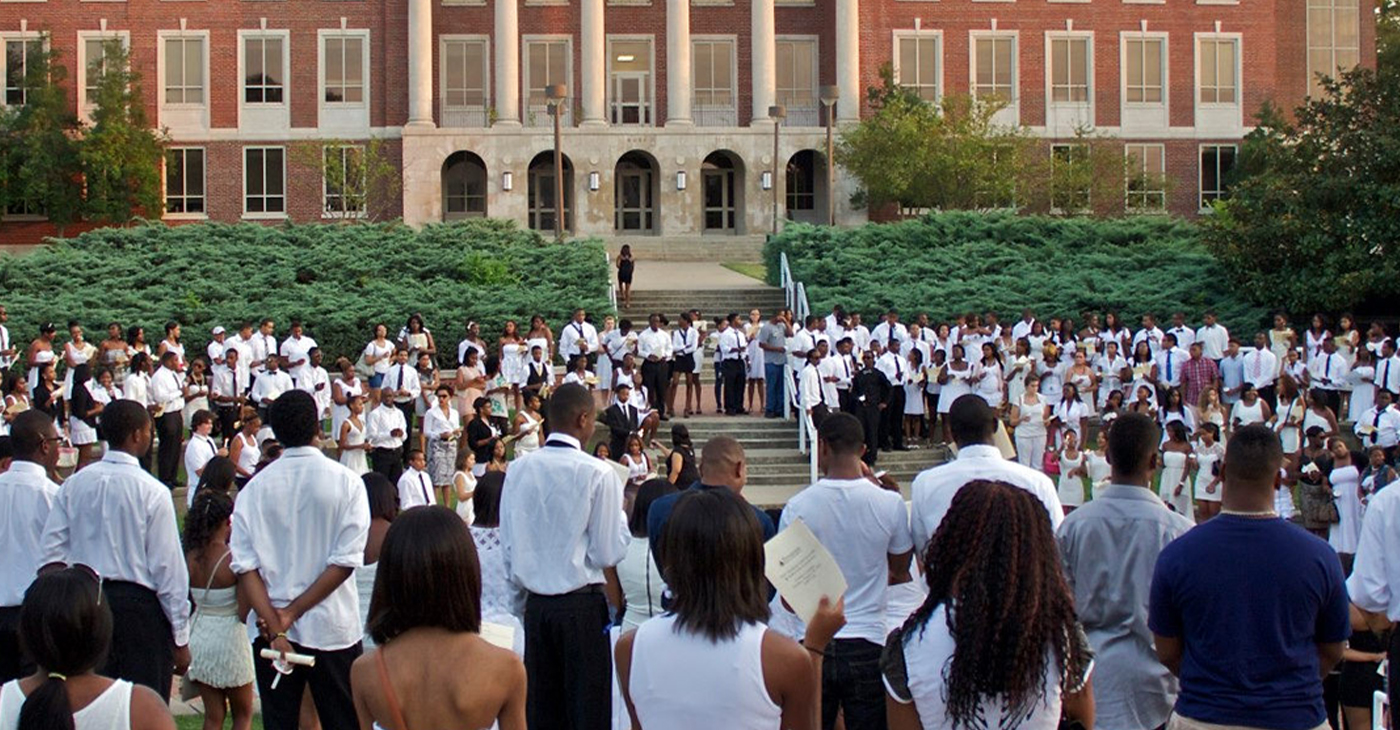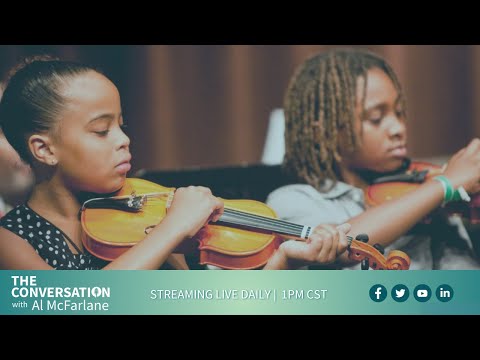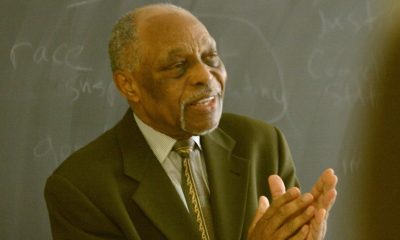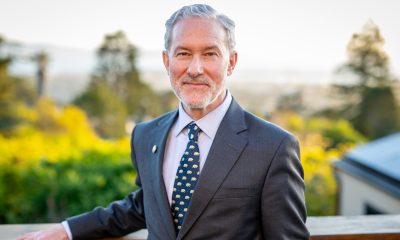#NNPA BlackPress
New Jersey Seminary to Pay $27 Million in Reparations for Ties to Slavery
NNPA NEWSWIRE — “The Seminary’s ties to slavery are a part of our story,” Barnes stated. “It is important to acknowledge that our founders were entangled with slavery and could not envision a fully integrated society. We did not want to shy away from the uncomfortable part of our history and the difficult conversations that revealing the truth would produce.”
By Stacy M. Brown, NNPA Newswire Correspondent
@StacyBrownMedia
The Princeton Theological Seminary, in Princeton, NJ, has set aside $27 million to pay reparations for its ties to slavery.
Among the institutions of higher education, the more than two-hundred-year-old Seminary joined Rutgers and Princeton Universities to publicly disclose their ties to the slave trade.
However, neither Rutgers nor Princeton have pledged reparations.
The Seminary recently began a study of its history with the enslavement of African Americans after three Black seminarians launched a petition calling for reparations.
“These payments are an act of repentance,” M. Craig Barnes, president of the Seminary, said in a statement. “We are committed to telling the truth,” Barnes said.
Although he noted that the Seminary never owned slaves, it was complicit in the slave trade.
Barnes said Princeton Theological Seminary benefitted from the slave economy when it invested in Southern banks. They also received funds from donors who directly profited from slavery, and the founding fathers of the academy used slave labor.
Faculty leaders also once advocated for sending free Black people to Liberia.
“The Seminary’s ties to slavery are a part of our story,” Barnes stated. “It is important to acknowledge that our founders were entangled with slavery and could not envision a fully integrated society. We did not want to shy away from the uncomfortable part of our history and the difficult conversations that revealing the truth would produce.”
The Princeton Theological Seminary was the first Seminary founded by the General Assembly of the Presbyterian Church in 1812. The establishment of The Theological Seminary at Princeton marked a turning point in American theological education, according to historians at the school.
The College of New Jersey, later known as Princeton University, was supportive of this plan, historians stated.
With fewer than a dozen students, in 1812, Archibald Alexander was the first— and for one year the only — professor at the Seminary. He was joined the following year by a second professor, Samuel Miller, who came to Princeton from the ministry of the Wall Street Church in New York.
John White, the dean of students and vice president of student relations, said in a statement that the reparations decision came after a lengthy historical audit and the formation of a task force to investigate the Seminary’s past.
“This is the beginning of the process of repair that will be ongoing,” White stated.
White served as chair of the task force, which included trustees, faculty, administrators, students, and alumni.
He noted that they took part in a deliberative process to provide opportunities for the campus community to discuss and respond to the audit report.
The task force hosted more than 25 events, meetings, and conversations on the campus in the previous academic year.
Feedback gathered from students, faculty, administrators, and alumni were incorporated in the recommendations presented to the Seminary’s board. The Board of Trustees also conducted a year-long process of study, the Seminary’s website reported.
“From the beginning, the Board of Trustees has encouraged a thorough process of understanding our history that would lead to a meaningful response,” White stated.
With an immediate rollout of the plan and continuation through 2024, the Seminary intends to make a “meaningful and lasting change” with the more than 20 approved initiatives, including:
- Offering 30 new scholarships, valued at the cost of tuition plus $15,000, for students who are descendants of slaves or from underrepresented groups
- Hiring a full-time director of the Center for Black Church Studies
- Hiring a new faculty member whose research and teaching will give critical attention to African American experience and ecclesial life
- Changes in the Seminary curriculum, including a required cross-cultural component and integrating into the first-year curriculum for every master’s student, sustained academic engagement with the implications of the historical audit
- Designating five doctoral fellowships for students who are descendants of slaves or from underrepresented groups
- Naming the library after Theodore Sedgwick Wright, the first African American to attend and graduate from Princeton Seminary
- Naming the Center for Black Church Studies after Betsey Stockton, a prominent African American educator in Princeton during the antebellum North and a Presbyterian missionary in the Sandwich Islands (present-day Hawaii). Before gaining freedom, Stockton was a slave to the chair of Princeton Seminary’s Board of Trustees.
- Enhancing community partnerships and supporting historically disenfranchised communities in and around Princeton
- Ensuring every member of the Princeton Seminary community understands its history
- A committee has been established to oversee the implementation of the plan and will regularly report progress to the board.
- The program costs for the responses represent a commitment of more than $1 million annually on an ongoing basis.
- To sustain this programming in perpetuity, $27.6 million will be reserved in the endowment.
“Seminary’s ties to slavery are a part of our story. It is important to acknowledge that our founders were entangled with slavery and could not envision a fully integrated society,” Barnes stated.
“We did not want to shy away from the uncomfortable part of our history and the difficult conversations that revealing the truth would produce.”
#NNPA BlackPress
IN MEMORIAM: Ramona Edelin, Influential Activist and Education Advocate, Dies at 78
NNPA NEWSWIRE — Born on September 4, 1945, in Los Angeles, California, activist Ramona Edelin’s early years were marked by a commitment to education and social justice. According to her HistoryMakers biography, after graduating from Fisk University with a Bachelor’s degree in 1967, she pursued further studies at the University of East Anglia in England. She earned her master’s degree before completing her Ph.D. at Boston University in 1981.
The post IN MEMORIAM: Ramona Edelin, Influential Activist and Education Advocate, Dies at 78 first appeared on BlackPressUSA.

By Stacy M. Brown, NNPA Newswire Senior National Correspondent
@StacyBrownMedia
Once upon a time, Black Americans were simply known as colored people, or Negroes. That is until Ramona Edelin came along. The activist, renowned for her pivotal roles in advancing civil rights, education reform, and community empowerment, died at her D.C. residence last month at the age of 78. Her death, finally confirmed this week by Barnaby Towns, a communications strategist who collaborated with Dr. Edelin, was attributed to cancer.
Born on September 4, 1945, in Los Angeles, California, Edelin’s early years were marked by a commitment to education and social justice. According to her HistoryMakers biography, after graduating from Fisk University with a Bachelor’s degree in 1967, she pursued further studies at the University of East Anglia in England. She earned her master’s degree before completing her Ph.D. at Boston University in 1981.
Edelin’s contributions to academia and activism were manifold. She was pivotal in popularizing the term “African American” alongside Rev. Jesse L. Jackson in the late 1980s.
Jackson had announced the preference for “African American,” speaking for summit organizers that included Dr. Edelin. “Just as we were called Colored, but were not that, and then Negro, but not that, to be called Black is just as baseless,” he said, adding that “African American” “has cultural integrity” and “puts us in our proper historical context.”
Later, Edelin told Ebony magazine, “Calling ourselves African Americans is the first step in the cultural offensive,” while linking the name change to a “cultural renaissance” in which Black Americans reconnected with their history and heritage.
“Who are we if we don’t acknowledge our motherland?” she asked later. “When a child in a ghetto calls himself African American, immediately he’s international. You’ve taken him from the ghetto and put him on the globe.”
The HistoryMakers bio noted that Edelin’s academic pursuits led her to found and chair the Department of African American Studies at Northeastern University, where she established herself as a leading voice.
Transitioning from academia to advocacy, Edelin joined the National Urban Coalition in 1977, eventually ascending to president and CEO. During her tenure, she spearheaded initiatives such as the “Say Yes to a Youngster’s Future” program, which provided crucial support in math, science, and technology to youth and teachers of color in urban areas. Her biography noted that Edelin’s efforts extended nationwide through partnerships with organizations like the National Science Foundation and the United States Department of Education.
President Bill Clinton recognized Edelin’s expertise by appointing her to the Presidential Board on Historically Black Colleges and Universities in 1998. She also co-founded and served as treasurer of the Black Leadership Forum, solidifying her standing as a respected leader in African American communities.
Beyond her professional achievements, Edelin dedicated herself to numerous boards and committees, including chairing the District of Columbia Educational Goals 2000 Panel and contributing to the Federal Advisory Committee for the Black Community Crusade for Children.
Throughout her life, Edelin received widespread recognition for her contributions. Ebony magazine honored her as one of the 100 Most Influential Black Americans, and she received prestigious awards such as the Southern Christian Leadership Award for Progressive Leadership and the IBM Community Executive Program Award.
The post IN MEMORIAM: Ramona Edelin, Influential Activist and Education Advocate, Dies at 78 first appeared on BlackPressUSA.
#NNPA BlackPress
Tennessee State University Board Disbanded by MAGA Loyalists as Assault on DE&I Continues
NNPA NEWSWIRE — Recent legislative actions in Tennessee, such as repealing police reform measures enacted after the killing of Tyre Nichols, underscore a troubling trend of undermining local control and perpetuating racist agendas. The new law preventing local governments from restricting police officers’ authority disregards community efforts to address systemic issues of police violence and racial profiling.
The post Tennessee State University Board Disbanded by MAGA Loyalists as Assault on DE&I Continues first appeared on BlackPressUSA.

By Stacy M. Brown, NNPA Newswire Senior National Correspondent
@StacyBrownMedia
Tennessee State University (TSU), the state’s only public historically Black college and university (HBCU), faces a tumultuous future as Gov. Bill Lee dissolved its board, a move supported by racist conservatives and MAGA Republicans in the Tennessee General Assembly, who follow the lead of the twice-impeached, four-times indicted, alleged sexual predator former President Donald Trump. Educators and others have denounced the move as an attack on diversity, equity, and inclusion (DE&I) and a grave setback for higher education.
Critics argue that TSU’s purported financial mismanagement is a manufactured crisis rooted in decades of underinvestment by the state government. They’ve noted that it continues a trend by conservatives and the racist MAGA movement to eliminate opportunities for Blacks in education, corporate America, and the public sector.
Gevin Reynolds, a former speechwriter for Vice President Kamala Harris, emphasizes in an op-ed that TSU’s financial difficulties are not the result of university leadership because a recent audit found no evidence of fraud or malfeasance.
Reynolds noted that the disbanding of TSU’s board is not an isolated incident but part of a broader assault on DE&I initiatives nationwide. Ten states, including Tennessee, have enacted laws banning DE&I policies on college campuses, while governors appointing MAGA loyalists to university trustee positions further undermine efforts to promote inclusivity and equality.
Moreover, recent legislative actions in Tennessee, such as repealing police reform measures enacted after the killing of Tyre Nichols, underscore a troubling trend of undermining local control and perpetuating racist agendas. The new law preventing local governments from restricting police officers’ authority disregards community efforts to address systemic issues of police violence and racial profiling.
The actions echo historical efforts to suppress Black progress, reminiscent of the violent backlash against gains made during the Reconstruction era. President Joe Biden warned during an appearance in New York last month that Trump desires to bring the nation back to the 18th and 19th centuries – in other words, to see, among other things, African Americans back in the chains of slavery, women subservient to men without any say over their bodies, and all voting rights restricted to white men.
The parallels are stark, with white supremacist ideologies used to justify attacks on Black institutions and disenfranchise marginalized communities, Reynolds argued.
In response to these challenges, advocates stress the urgency of collective action to defend democracy and combat systemic racism. Understanding that attacks on institutions like TSU are symptomatic of broader threats to democratic norms, they call for increased civic engagement and voting at all levels of government.
The actions of people dedicated to upholding the principles of inclusivity, equity, and justice for all will determine the outcome of the ongoing fight for democracy, Reynolds noted. “We are in a war for our democracy, one whose outcome will be determined by every line on every ballot at every precinct,” he stated.
The post Tennessee State University Board Disbanded by MAGA Loyalists as Assault on DE&I Continues first appeared on BlackPressUSA.
#NNPA BlackPress
Braxton Haulcy and the Expansion of Walker|West Music Academy
May 24, 2023 – Walker West Music Academy gets an early start on expansion. Join us for a Wednesday episode of The …
The post Braxton Haulcy and the Expansion of Walker|West Music Academy first appeared on BlackPressUSA.

May 24, 2023 – Walker West Music Academy gets an early start on expansion. Join us for a Wednesday episode of The …
The post Braxton Haulcy and the Expansion of Walker|West Music Academy first appeared on BlackPressUSA.
-

 Activism4 weeks ago
Activism4 weeks agoOakland Post: Week of March 27 – April 2, 2024
-

 #NNPA BlackPress4 weeks ago
#NNPA BlackPress4 weeks agoCOMMENTARY: D.C. Crime Bill Fails to Address Root Causes of Violence and Incarceration
-

 #NNPA BlackPress4 weeks ago
#NNPA BlackPress4 weeks agoMayor, City Council President React to May 31 Closing of Birmingham-Southern College
-

 #NNPA BlackPress4 weeks ago
#NNPA BlackPress4 weeks agoBeloved Actor and Activist Louis Cameron Gossett Jr. Dies at 87
-

 Community1 week ago
Community1 week agoFinancial Assistance Bill for Descendants of Enslaved Persons to Help Them Purchase, Own, or Maintain a Home
-

 Activism3 weeks ago
Activism3 weeks agoOakland Post: Week of April 3 – 6, 2024
-

 Business1 week ago
Business1 week agoV.P. Kamala Harris: Americans With Criminal Records Will Soon Be Eligible for SBA Loans
-

 Community1 week ago
Community1 week agoAG Bonta Says Oakland School Leaders Should Comply with State Laws to Avoid ‘Disparate Harm’ When Closing or Merging Schools





















































